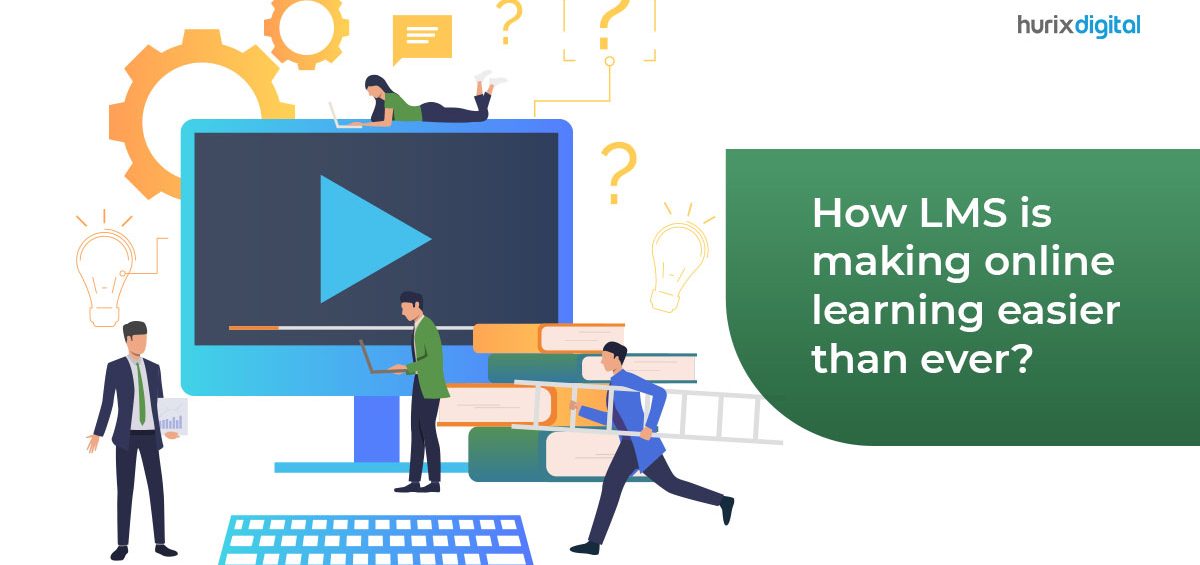The last few years have seen a phenomenal shift in the educational landscape, where online learning has become an integral part of the industry. In addition, the pandemic-driven digital disruption has significantly changed how online learning is delivered.
While an increasing number of institutes and organizations initially found it challenging to make the shift from traditional or physical classrooms to online classrooms, the one technology that has made this shift much easier is the learning management system (LMS).
Leveraging the best LMS not only help institutions and organization simplify their remote or online learning offerings and create a better experience for learners.
If you are still unsure how LMS platforms make online learning easier, this post is for you. Here, we will explore some of the key ways LMS assists in making online learning simpler.
What Is LMS?
An LMS or Learning Management System is a software program that enables students to access and receive course/learning content and other educational resources online to fulfill their educational needs.
Put simply, and an LMS is a system that educational institutions and organizations can use to offer their remote online courses.
Apart from making it easy for students to learn from anywhere, anytime, the best LMS can also enroll new students, easily deliver e-learning courses and efficiently manage the tests or assessments provided to the student.
7 Ways an LMS Helps Make Online Learning Easier
Offers Unlimited Access to Course Content
One of the key advantages of LMS platforms is their ability to offer unlimited access to course content. As soon as the course materials are uploaded onto the LMS, it allows learners unlimited access to the information.
This is especially helpful to students who need to access the material on the go. They must log in to the LMS platform via their smartphones, tablets, or other devices and access the required content without waiting for the next online training session to develop the requisite skills.
Organizes Learning in One Single Location
Traditional training systems use outdated methods to store training content in multiple drives and devices. This significantly enhances the risk of losing important data.
A learning management system makes storing the training content in one location easier. Apart from this, learners can access all courses remotely without having to be physically present in the training location.
Easy Tracking Of Learner’s Progress
An LMS allows the instructors to conveniently observe the learner’s progress on the platform itself. This then helps the instructor administer various corrective measures based on the skill and knowledge gaps.
For instance, if the learner is lagging, then the instructor can offer additional resources to them. Likewise, if the learner is going too fast on the platform, the instructor can ensure the availability of more relevant courses for them.
Reduces Costs An LMS helps you reduce L&D costs significantly. Other than cutting down on travel costs, you also have to spend much less on things such as renting online training sites, costs related to printed eLearning materials, and more.
A good LMS system allows your learners to carry out all of their training modules online, thus helping you save substantial money on your overall learning and development budget.
Enables Various Assessment Options
LMS systems make online learning easier by allowing you to run diverse assessments in multiple formats.
These include quizzes, videos, MCQs or multiple-choice questions, questionnaires, etc. Further, the system offers immediate test results, thus allowing learners to see the areas where they need to improve.
Educators and teachers can use an LMS system to leverage disparate content formats such as podcasts, webinars, games, presentations, and more for learning materials. This allows online learners to choose how and what they want to learn and enhances their learning experience.
Enables Gamification
While e-learning comes with a whole set of benefits, it also has certain disadvantages, such as ensuring that learners maintain focus when having online classes.
To navigate this better, gamification or to add game elements into e-learning course content is an excellent way to make learning much more engaging and fun.
Based on the varied game elements and design, the technique can be instrumental in helping learners retain the information. Further, various gamification tools such as leaderboards, badges, and points systems help engage learners better and develop a healthy competitive spirit.
Easy Tracking and Reporting
LMSs are a great way to help educators keep track of their student’s learning progress in a virtual learning environment. It allows them to conveniently view and analyze learner performance while ensuring they meet various milestones.
If the learner cannot reach certain milestones within the defined timelines, the educator can work on giving additional classes to supplement learning.
Apart from this, most LMS platforms available in the market today come with powerful reporting and analytics features to help educators assess the effectiveness of the e-learning course so they can modify the content per the learners’ specific needs.
To Conclude
Online or virtual learning is the new normal in today’s environment. Whether you go for synchronous or asynchronous training, an LMS serves as a great tool for making your online training process easier.
Investing in a good LMS brings several academic benefits to institutions and organizations alike and cost efficiency to overall L&D initiatives.
While choosing an LMS platform, it is best to look into all the above-mentioned benefits that the software can bring to aid online learning. This will help you make an informed choice.
One of the best LMS you can look at is from Hurix Digital. The LMS solution by Hurix can be conveniently leveraged through the e-learning platform to avail both traditional classroom training and blended learning models.
Get in touch with us to learn more about our LMS solutions.











